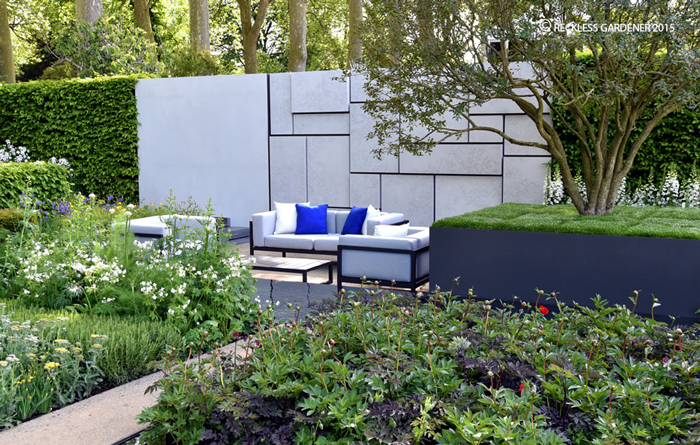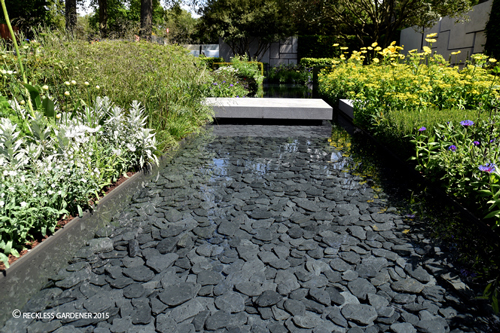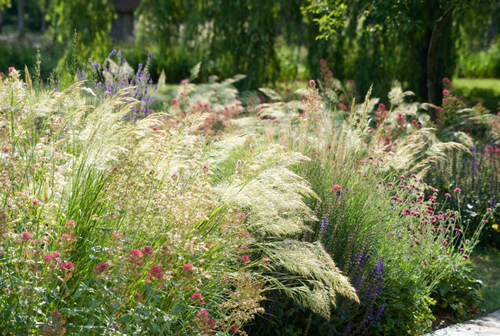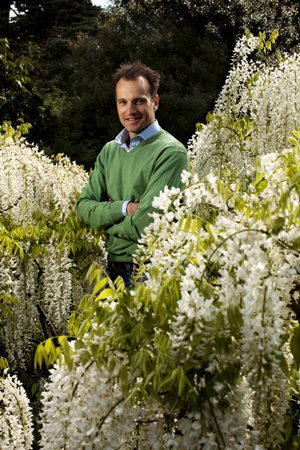Marcus Barnett’s top tips on improving the design of your garden
Marcus Barnett, one of the UK’s leading award-winning landscape and garden designers, offers some advice on how to improve the design of your garden.
Just back from the 2015 RHS Chelsea Flower Show, where Marcus was awarded a Gold Medal for his garden sponsored by The Daily Telegraph, (pictured above) he has put pen to paper to give us some inspiration for our own gardens.
With a reputation for creating gardens which feel particularly personal to a client he and his team produce gardens which have both impact and a sense of romance. He prefers to use relatively natural planting to complement the surrounding landscape and architecture of a home.
In this feature Marcus outlines some of the points you need to consider when improving the design of your garden.
1 Design Overview:
Create a garden where space feels comfortable, relaxed and generous, but which also has a ‘sense of place’ at its heart. Don’t be afraid of simplicity and restraint.
2 Orientation:
Think about how each area of the garden works individually as well as within the overall design. Do you want a space to feel intimate and enclosed or open? Decide whether you want to look back at the house or towards a prominent focal point in the distance.
3 Water:
Build a pond or lake to reflect light and create a sense of space. Soften the feel of a garden with the subtle movement of a water feature and use running water to cover unwanted noise.
4 Planting:
Choose plants to suit the mood you want to create – evergreen topiary for a formal feel and an abundance of umbels and spires appearing through perennials for a relaxed feel.
Light green, grey and silver foliage tend to make a space feel bigger while bolder, darker green foliage is best used in larger gardens as a foil for coloured planting. Fragrance is also a good way to reinforce a specific mood.
5 Paving and other surfaces:
Use small cobbles to make a space feel bigger and large pieces of natural sawn stone or smooth terrazzo to make an area feel clean and uncluttered. Think about how the colour and warmth of any stone will complement nearby buildings and existing plants. Consider softening large expanses of hard surfacing with gravel and self-seeding plants, such as Erigeron karvinskianus, which will grew through it.
6 Walls and boundaries:
Divide the garden in a way which suits each area’s mood. Stone walls will add a more structural and architectural feel, while a soft deciduous hedge is a good way to create a romantic, hidden oasis, especially in smaller gardens.
7 Different perspectives:
As well as considering the views from the house, think about what people see as they move from one part of the garden to the next. Create a change of pace and add interest by giving each area its own feel, using different planting, orientation, surfaces and structures.
8 Visual links and focal points:
In smaller gardens, blurring the boundary between inside and out creates a greater sense of space. Consider extending indoor flooring out on to a terrace. Similar colours used indoors and outdoors can also be used to form a visual link. An outdoor worktop can also be aligned with a matching one inside the kitchen. In larger gardens, use sculpture to create focal points which will help to ‘steer’ people around the garden.
Avoid long periods with little or no colour by planting Iris reticulata for early spring colour and Primulas and Fritillaries which will add interest a few weeks later.
After the riot of late spring and summer is over, Amelanchier, Liquidamber, Birch or a carpet of cyclamen will add to Autumn colour. The brightly coloured stems of Cornus and Willlow, as well as Hamamelis, Sarococca, Hellebores, Viburnum bodnantense ‘Dawn’ and Lonicera x purpusii ‘Winter Beauty’ will brighten up the darker months.
10 Furnishing:
Choose garden furniture in the same way as you would for a house. For example, to create a relaxing and rustic look, choose a vintage wooden table and use cushions and throws to add texture and colour. Lighting is a great way to reinforce the mood you want to achieve – even a few hurricane lanterns will add romance to a summer evening. Think about how you will use your garden – practicality is key to a garden functioning as you want it to.
For more information on Marcus please check out his website on: www.marcusbarnett.com
Photo credit: ©Photo of Marcus Barnett by Matthew Lloyd.





